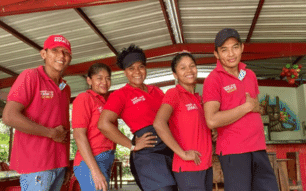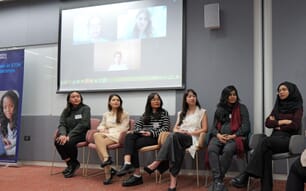Modern fish farming in the Mediterranean began in the 1980s with the cultivation of popular carnivorous finfish such as sea bass and sea bream. Much progress has been made since, with research in reproduction, larval culture, technology and feed manufacturing leading to a range of large-scale operations. Results have been significant, not only in the production of fresh, high-quality fish, but also in the establishment of a socio-economic structure with thousands of employees.
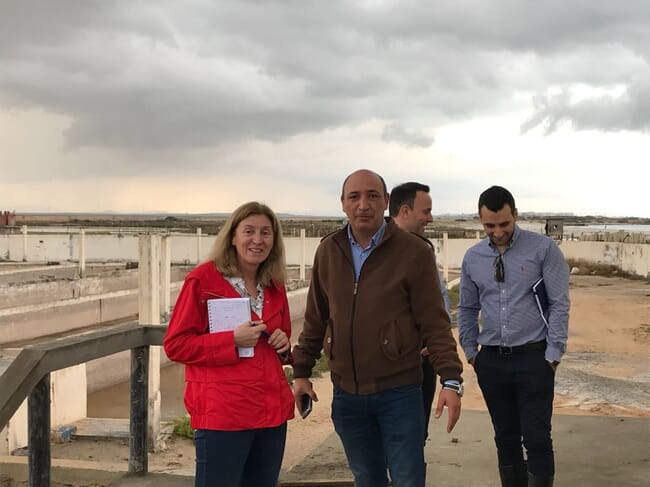
As INVE Aquaculture’s regional sales director for Europe the Middle East and Africa (EMEA) Isabel Represas is playing a key part in Mediterranean fish farming. In 2017 she produced a report entitled “Progress and trends in Mediterranean marine fish hatcheries” and believes the sector will only continue to evolve further.
Briefly describe your aquaculture career
I come from a varied background. I have a degree in economics and business administration from the University of Santiago de Compostela and a masters in international business from IESIDE Business School. After graduating, I had a number of jobs in different sectors, but was very quickly drawn to aquaculture and its role in supporting food production worldwide. Aquaculture combines various elements to turn a fragile life into solid growth. It can be very technical and scientific but is still a business with various related challenges.
I joined the aquaculture sector just when marine fish activity in the Mediterranean started growing. The two main species produced were sea bass and sea bream. The company I currently work at, INVE Aquaculture, gave me the opportunity to develop my career in this field. After holding different positions at the INVE branch in Spain, and later as area manager for western Europe, I was appointed sales director for the EMEA region. We are now part of Benchmark Holdings, supporting our customers in taking better care throughout the culture lifecycle – covering genetics, health, nutrition and the environment.
What inspired you to start in aquaculture?
I grew up in an area of the Spanish Atlantic coast surrounded by the sea and by plenty of mussel farms. The culture of mussels was already at an industrial level and playing an important role in the region’s economy. Part of my university studies was related to the branding of those molluscs and I was impressed by the whole process of farming the sea. Later, I visited a turbot hatchery and discovered how fascinating it was to care for marine life, from larvae to harvest.
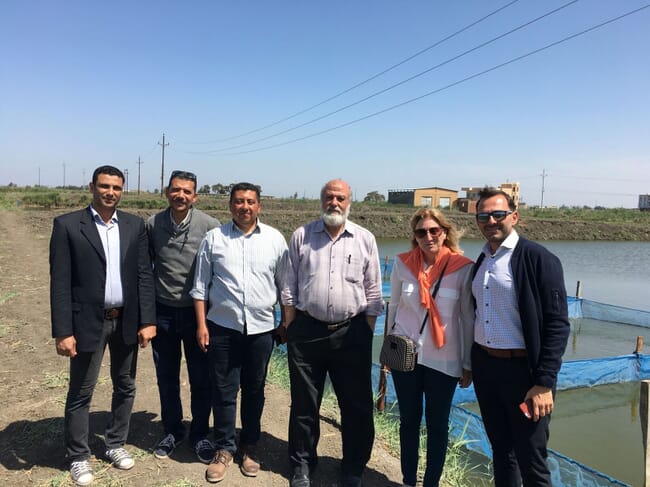
Describe a typical day in your current role
I usually answer emails, follow up on the progress of commercial action plans, analyse sales and hold video calls with people such as the commercial director, product managers, area managers or key account managers. I have typical days travelling and typical days in my office, but I always start the day listening to or reading the world news headlines and checking emails. Travelling can be to different INVE companies, such as ITECH in Belgium, Greece or Turkey, or visiting customers. This wide variety is what I like the most about my work – different tasks, different locations, different people, colleagues, customers – a great diversity.
What’s the most interesting experience you’ve had in the sector to date?
I have many but two moments come to mind. The first was a trip to our first customer, when we used CysTM (a tank with magnets inside to hatch artemia) to show them how the technology SEP-Art worked. The results were very impressive and a step forward in the larval rearing process, done to simplify work at the hatchery for the producers. The second was a customer seminar that we organised in Crete in October 2015. We launched the “Fry quality and growth potential” concepts as our commitment to the future. All Mediterranean producers participated with enthusiasm and it was a great event.
In 2017 you produced a report entitled “Progress and trends in Mediterranean marine fish hatcheries”. Why did you undertake this study?
INVE has field teams in every corner of the Mediterranean. This allows us to stay up to speed with what is going on in the market, monitoring all-important trends, innovations and breakthroughs. For many years now, we have collected field data covering areas such as species, production numbers, survival and production techniques, and we keep records of the key figures as indicators of evolution in the industry.
Sharing knowledge with our customers and the wider aquaculture community has always been our philosophy. We are committed to supporting farmers and sharing technical, business and market knowledge. We believe this is the key to success and this is what inspired this study.
How do you think the marine fish industry in the Mediterranean will evolve?
Consolidation is ongoing and is going to make the sector stronger. I believe that sea bass and bream production will continue to grow, with Greece and Turkey remaining the largest producers, applying strategies of value-added products and differentiation to reduce price volatility. At the same time, diversification is needed to increase the variety of farmed fish species and reduce the risk of monoculture practices. Seriola could be a promising new species, based on market-development strategies – it’s adaptable, grows to a large size quickly and is easy to process.
The intensification of production is directly linked to an increased incidence of disease outbreaks and this will be the biggest challenge facing the industry in the coming years. The introduction of stricter biosecurity and health-management strategies, the increasing use of vaccinations and advances in genetics and nutrition will allow production to expand further.
How important are sustainability concerns to you and how do you address them in your work?
Maintaining the balance between intensification, performance and sustainability is a must, because growth of the aquaculture industry is needed to feed the growing global population. But growth cannot come at any price. The entire global aquaculture industry should therefore improve its sustainability, reduce the need for antibiotics and boost productivity.
With regards to sustainability, INVE Aquaculture applies criteria for sourcing fishmeal and fish oil which it uses in its feeds, purchasing them from certified suppliers whose products originate from responsibly managed fisheries.
What innovation do you think has the most potential to change the sector?
We are facing an era of change, and technology, especially that which is associated with the Internet of Things, is leading this change. Digital technology will play a big role in the future of fish farming. Data collection will go up and help farmers to increase predictability and efficiency. Monitoring all parameters of farming in relation to the environment will make the fish-farming industry more predictable, regardless of disease outbreaks, health risks and other threats.
At the same time, digital technology will also provide us with a better understanding of genetics and fish biology, and solve challenges related to fish welfare, feed efficiency, fish mortality and traceability, resulting in cost-effective, high-tech nutritional solutions. Technology will boost production in a sustainable and efficient way, helping cost reduction.
Are there any individuals or organisations in aquaculture who you’ve found particularly inspirational?
The International Association for Women in Seafood Industry (WSI), is a new, non-profit association that highlights women’s contributions to the seafood industry and raises awareness of gender issues. I find this organisation very inspirational. They deliver projects, collaborate with existing associations, support initiatives and share information to reinforce the voices of women and their visibility in the seafood industry.
Have you faced any particular challenges as a woman in aquaculture?
I’m not really sure if the challenges I’ve faced have been due to the fact that I am working in aquaculture. I think they are more related to being a woman in a business environment that has plenty of opportunities for networking in an atmosphere that is classically macho – although I’ve not encountered this within INVE.
The lack of visibility of women in senior executive positions in aquaculture reflects the general social position in decision-making roles. We need to work together to change the situation.
It is still hard for some people to accept that women have the power and skills required for certain top positions. Women need time to prove this and show results, while for men, it is taken for granted. Nevertheless I’m firmly convinced that the strong stereotypes from older generations will melt away in the coming years. In a few generations’ time, these will disappear and the younger generations will break down all barriers. Still, we must keep pushing and promote gender equality. According to the latest Gender Gap Report from the World Economic Forum, it is going to take more than 100 years to achieve gender parity. Having more women in leadership roles is the key to changing that.
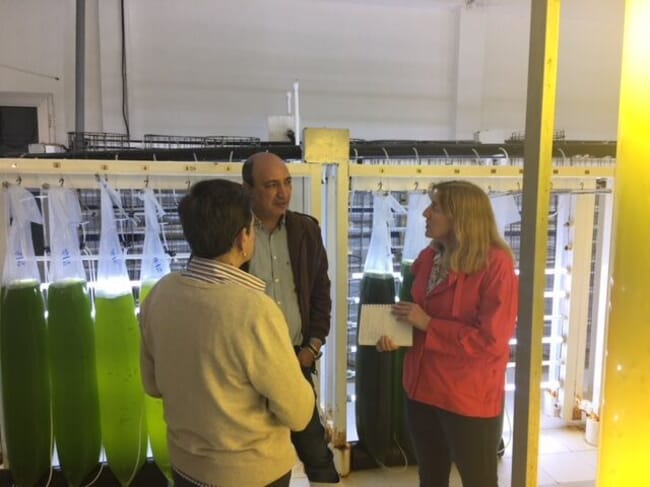
What advice would you give to women looking to start a career in the sector?
The aquaculture sector is exciting. It is relatively new and we are still in the discovery phase. It is full of opportunities to be innovative so it’s impossible to get bored. It doesn’t matter which part of the chain you are involved in.
I don’t want to fall into stereotypes but I think that women are very good at observation and bringing together all the elements that a live organism needs in the challenging environment of water. This is a great opportunity for innovation.
What has been the industry’s greatest accomplishment in recent years?
Focusing on the marine species in the Mediterranean, as this is the area I know best, I can see that, thanks to the intensification of rearing practices and the optimisation of fry production methods, fry production crashes have decreased and the average production output has become more consistent.
What outstanding challenge would you most like to solve?
We know that certifications can offer added value for producers, but nowadays there are too many certification bodies with different rules. This is making the process difficult for the industry as well as making it harder for consumers to understand their relative merits. What is even worse is that, in some cases, these messages are not helping to enhance the poor image of aquaculture products.
I strongly believe that we’d benefit from global standards that are aligned to all certification partners, with one strong, independent organisation to harmonise the system. This could develop common requirements for standards for different areas – such as feed production, farming and processing operations.
Collaboration is key in aquaculture and creating a certification platform that brings together all existing elements for the entire value chain would clearly help to improve consumer perception of the sector.


